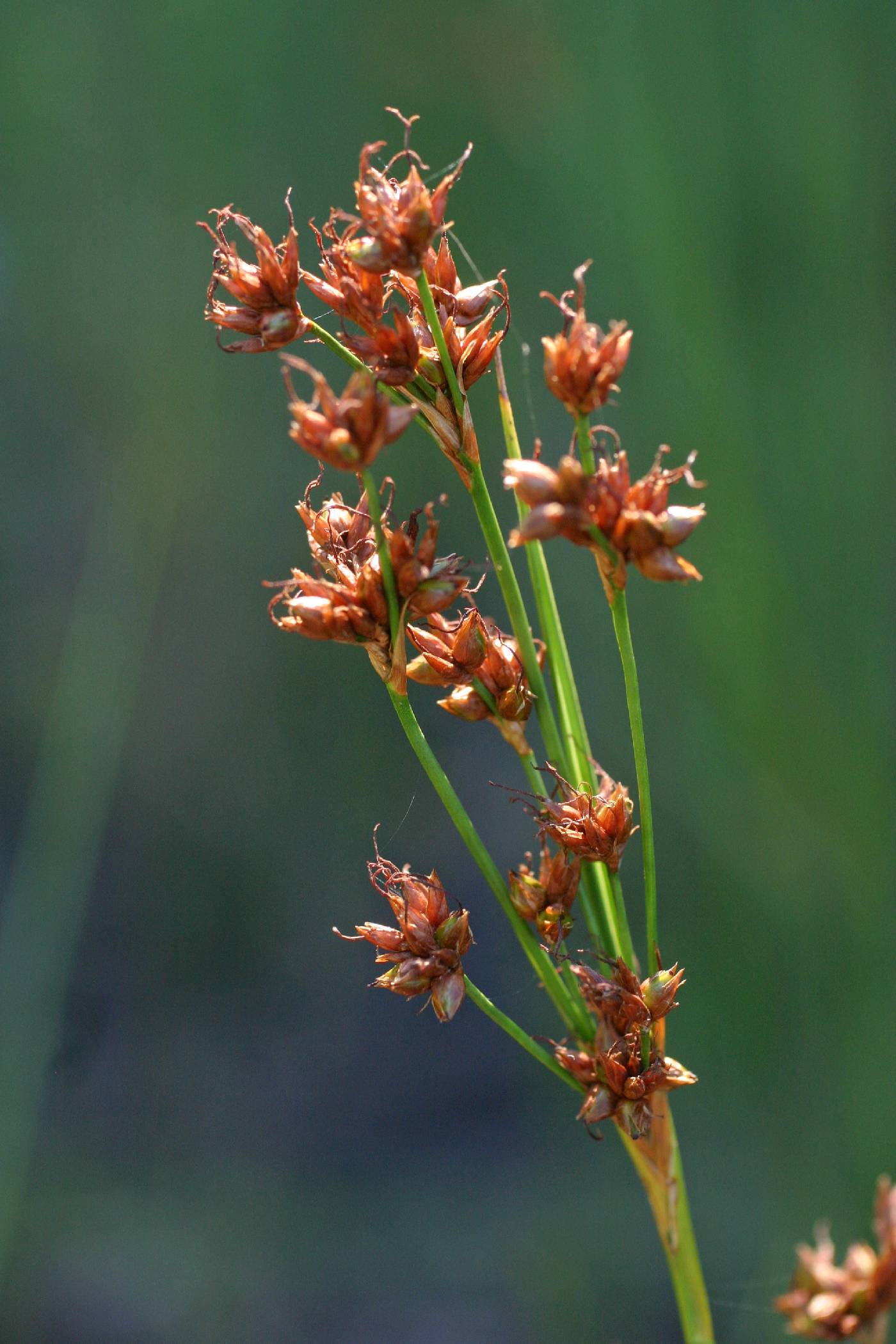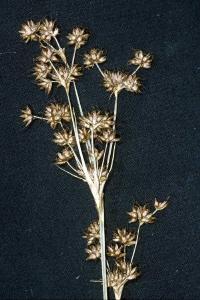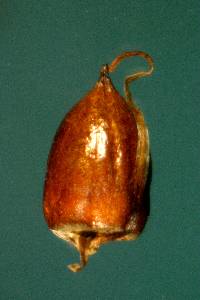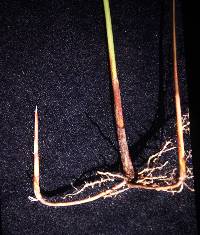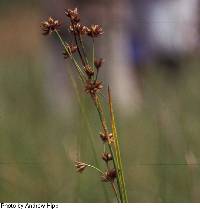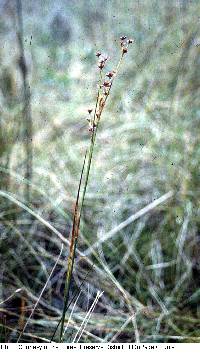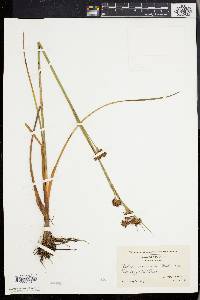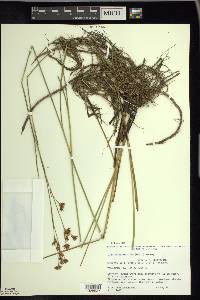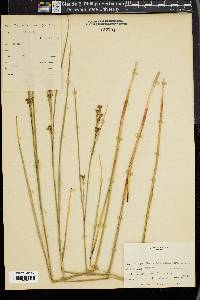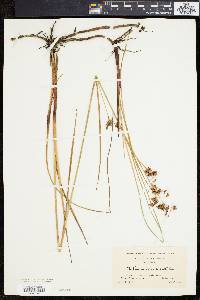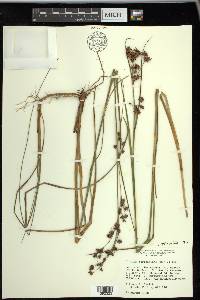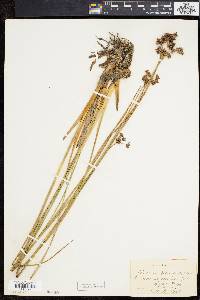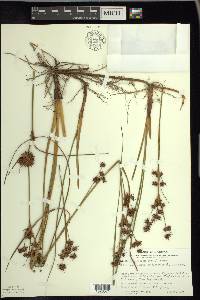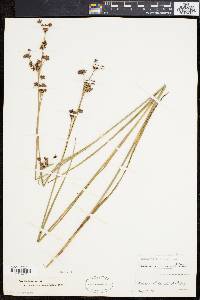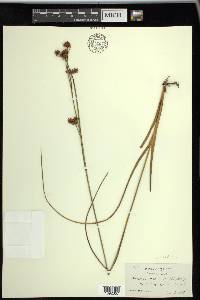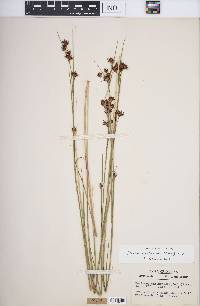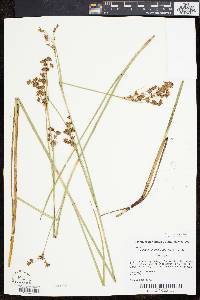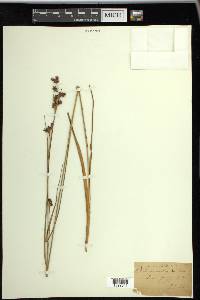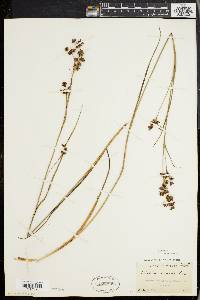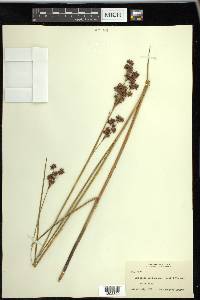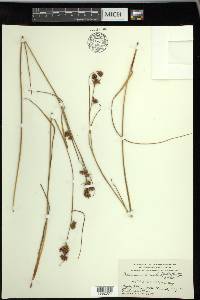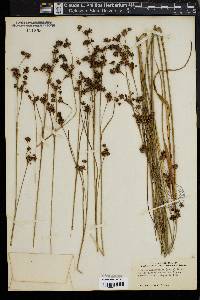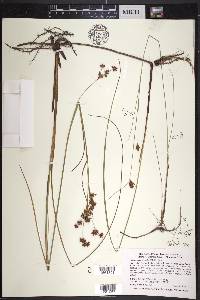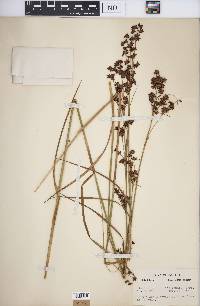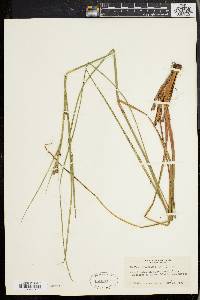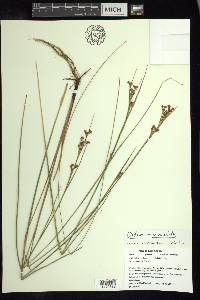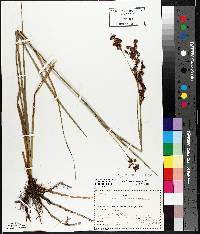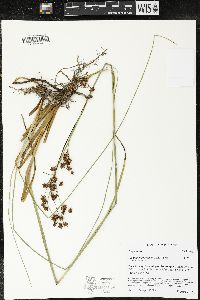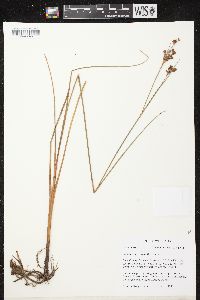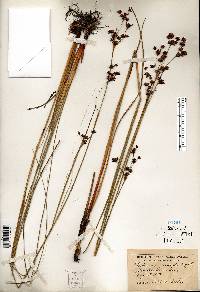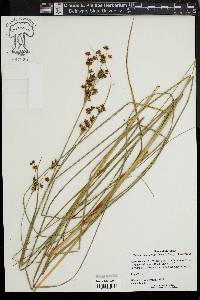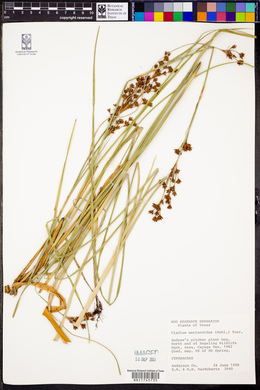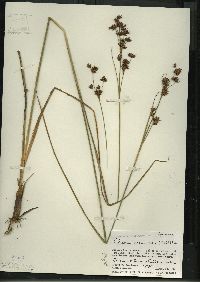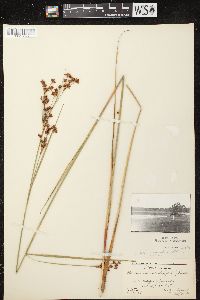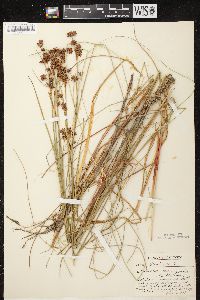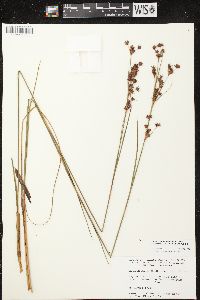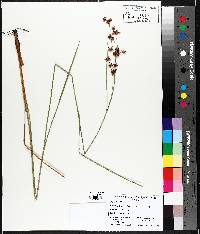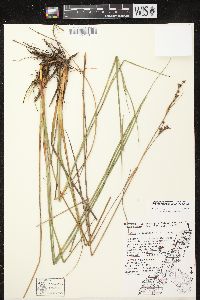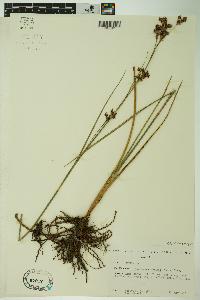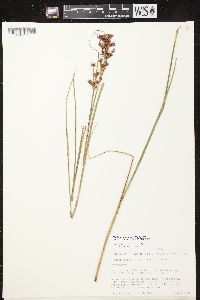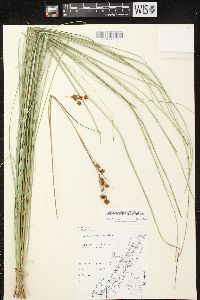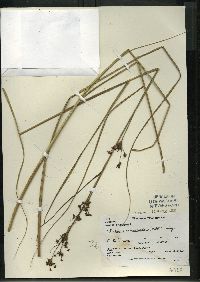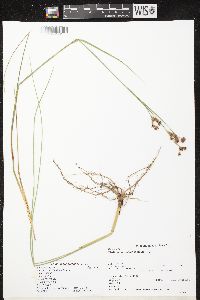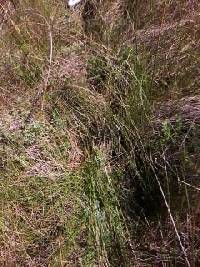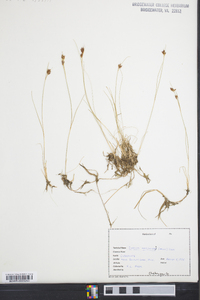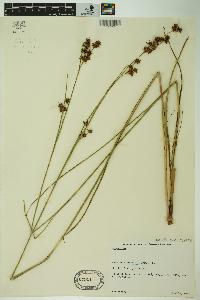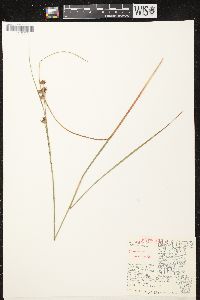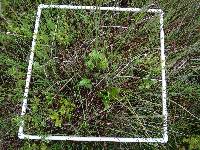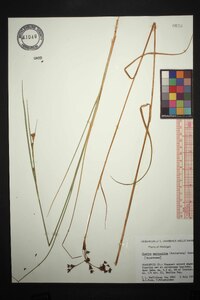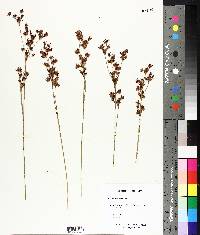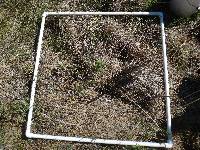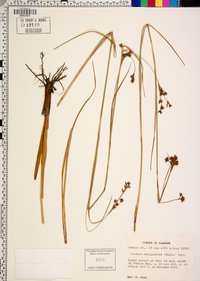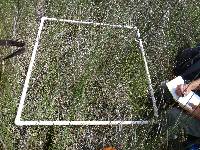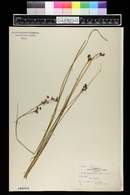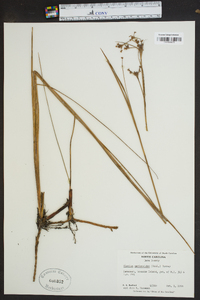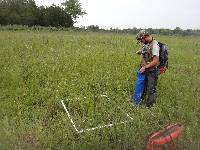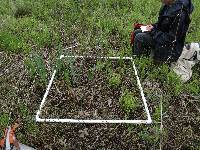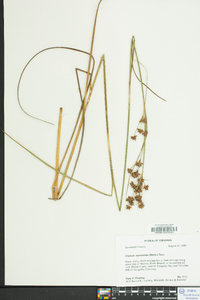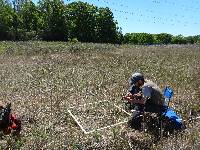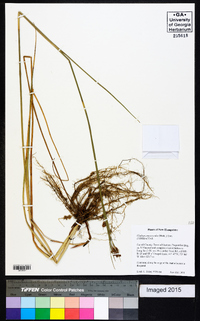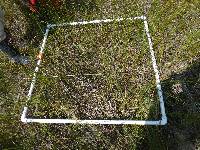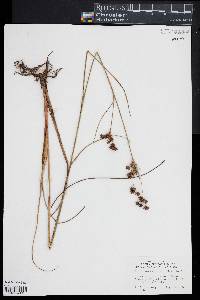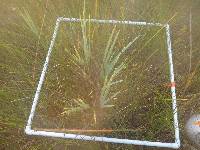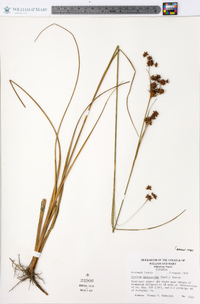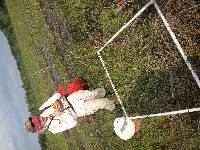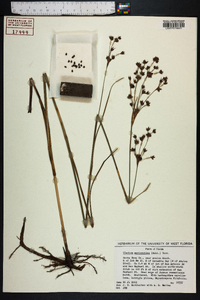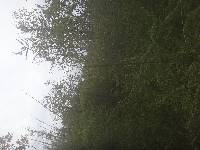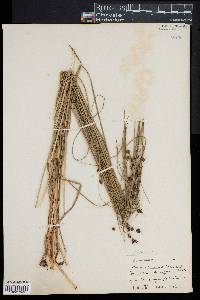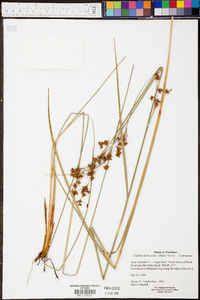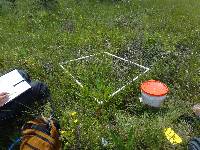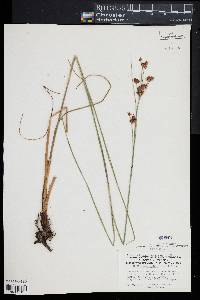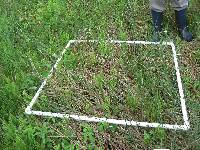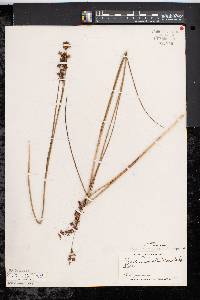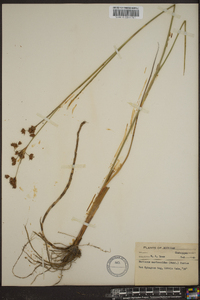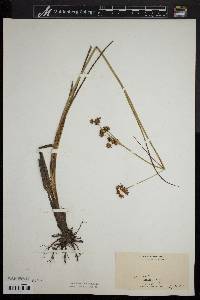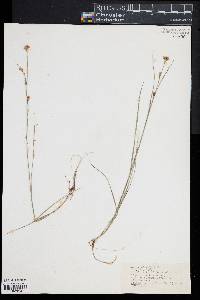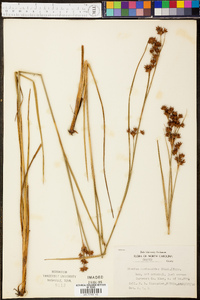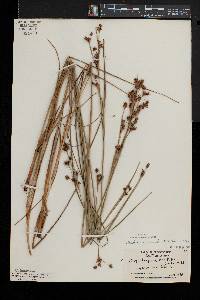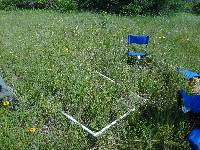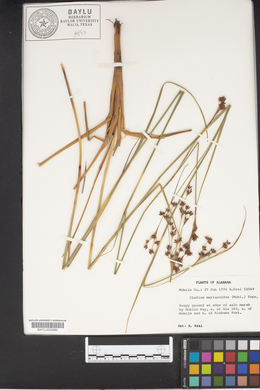
|
|
|
|
Family: Cyperaceae
Smooth Saw-Grass, more...smooth sawgrass
|
Rhizomes to 10 cm × 2 mm. Culms 0.3-1 m × 1-2 mm. Leaves: blades conduplicate to sub-involute, (1-)2-3.5 mm wide, smooth or nearly so. Inflorescences terminal or lateral and terminal, pedunculate, peduncle mostly covered by subtending leaf sheath, 15-25 cm; 1st and 2d order branches (rarely congested and with little obvious branching), branches stiffly ascending. Spikelets in groups of 3-5(-30), narrowly ellipsoid to lanceoloid; floral scales 5-6, the proximal chestnut brown, ovate to oblong-lanceolate, 2.5-3 × 2 mm, midvein conspicuous, lateral veins weak; stamens 2; anthers 2 mm, connective apices 0.1 mm; styles 2-2.5 mm; stigmas 1-1.5 mm. Achenes whitish or pale green, ovoid, 2.5-3 × 1.5-1.7 mm, base 3-6-lobed, discoid, truncate and impressed, flared, apex subacute, irregularly rugulose longitudinally, glossy. Fruiting summer-early fall. Open acidic to alkaline wetlands, brackish upper edges of tidal marshes; 0-400(-1200) m; Man., N.B., Nfld. and Labr., N.S., Ont., Que., Sask.; Conn., Del., Fla., Ill., Ind., Maine, Md., Mass., Mich., Minn., N.H., N.J., N.Y., N.C., Ohio, Pa., R.I., S.C., Tenn., Tex., Vt., Wis. Perennial herb with slender rhizomes, often colonial to 1 m tall Leaves: alternate, 1 - 3.5 mm wide, folded together lengthwise (conduplicate) to sub-involute (more or less rolled inward along the margins above), linear, parallel-veined, with a sheathing base that encloses the stem. Inflorescence: compound, branched, composed of spikelets in head-like clusters, terminal, or terminal and lateral, subtended by a 15 - 25 cm long leaf sheath. Flowers: minute, lacking sepals and petals, subtended by a floral scale. Stamens two, exserted. Anthers to 2 mm long. Pistil one. Style 2 - 2.5 mm long, three-cleft. Stigmas 1 - 1.5 mm long. Fruit: a one-seeded achene, whitish to light green to dull brown, 2.5 - 3.5 mm long, about 1.5 mm wide, egg-shaped with a contracted or flat base and pointed tip, circular in cross-section. Seed with a thin, non-adherent wall. Culm: solitary to a few, stiff, to 1 m long, triangular in cross-section, solid. Spikelets: in groups of three to five (or more), egg-shaped to lance-shaped, with five or six floral scales. Scales spirally arranged and overlapping, chestnut brown with a conspicuous midvein, 2.5 - 3 mm long, to 2 mm wide, egg-shaped to narrowly lance-shaped, lowest one without a flower. Similar species: No information at this time. Flowering: mid-June to mid-August Habitat and ecology: Locally frequent in marly seeps, flats, and prairie fens. Also found in mineral soil seeps and tamarack bogs. Near Lake Michigan it may be found in calcareous sandy pannes and wet prairies. Occurence in the Chicago region: native Etymology: Cladium comes from the Greek word clados, meaning branch. Mariscoides means "like Mariscus (the genus)." Author: The Morton Arboretum Culms stiff, slender, to 1 m, solitary or few together from rhizomes, often colonial; blades 1-3 mm wide, channeled toward the base, flat or nearly so in the middle, becoming terete distally, smooth or nearly so; infl slender, the terminal cyme 5-10 cm, the lower ones remote; spikelets lanceolate, becoming ovoid, 3-5 mm; lower scales short, subrotund, the upper ovate; achene dull brown, 2.5-3.5 mm, conspicuously pointed, the base either contracted or broadly truncate. Swamps and marshes, usually in calcareous or saline places; N.S. to Minn., s. to w. Fla. and Ky.; e. Tex. (Mariscus m.) Some plants have the infl much congested. Gleason, Henry A. & Cronquist, Arthur J. 1991. Manual of vascular plants of northeastern United States and adjacent Canada. lxxv + 910 pp. ©The New York Botanical Garden. All rights reserved. Used by permission. From Flora of Indiana (1940) by Charles C. Deam Rather frequent or locally common where found in the lake area in shallow water and on the wet borders of lakes and in marshes and springy places. It is usually found in very marly places. |
This project was made possible in part by the Institute of Museum and Library Services [MG-70-19-0057-19].
Powered by Symbiota

